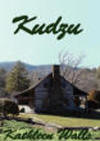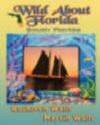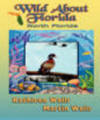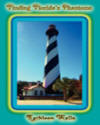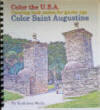St. Johns Botanical Garden and Nature Preserve
Story and photos by
Kathleen Walls
Kathleen Walls
As a long-time Florida resident, I am
familiar with palm trees but until I visited St. Johns
Botanical Garden and Nature Preserve (SJBGNP), I had no idea
there were so many variants. Dr. John Rossi, founder and
resident biologist led our small group on a tour of the garden.
The garden is St. Johns County’s newest attraction. It focuses
on an important, but often neglected side of the county, the
natural side.
The location of the garden midway between
the St. Johns River, and the Atlantic Ocean create a unique
microenvironment. One factor Dr. Rossi mentioned was
interesting. With north Florida’s weird weather changes, we can
go from mid-twenties one day, to seventies and eighties the
next day. He pointed out that the garden uses canopies to
protect plants. Many of the plants here are tropical so
clustering them close together with hardier tropicals under a
huge oak canopy affords them some protection from wind and
frost. These canopy layers are of different heights, like tall
oaks covering shorter palms, which in turn protect the smaller
plants and scrubs like Loas Lady Palms, one of the smallest
palm variants I have ever seen. While many other gardens have
lost plants due to frost, this garden has managed to protect
the less cold tolerant plants and lost fewer.
One interesting fact he told us was that
most of our local coconut palms originated from a shipwreck in
the 1800s of a ship on its way from Cuba to Spain. It’s
interesting to think Florida’s favorite palm tree is really an
invasive plant although certainly not an unwelcome one.
Dr. Rossi showed us dozens of other palms: wedding palm, paradise palm, king palm, royal palm, pigmy date palm, island palm, candy cane palm, Indian date palm, windowpane palm, and many more. They range from local to Madagascar, Caledonia, Southeast Asia, and other places.
Of course, there is so much more than
palms here. You enter through a gift shop where you can find
many exotic plants as well as native plants for sale. Some
exotics you might not want to spread are still beautiful if
kept in pots.
There is a Cactus Carral where you find a
variety of cacti, yuccas, and bromeliads. Some of the cacti are
almost sculpture-like. Butterfly attracting plants are all over
in the garden. Throughout the garden there are various trails
including Silver Hill, Fan Palms of the World, African, Asian,
and Australian Palms, Cuban Palms, Tropical Trail and more.
Besides being a garden, it is a nature
preserve. There is a lake and a wooded natural area with a
small stream running through it. When I first viewed the lake,
I thought I spotted an alligator but was disappointed to find
it was a fake one. Hopefully, one day the lake may be home to
some of Florida’s largest reptiles.

However, Dr. Rossi assured us there are
lots of wildlife in the preserve. If you come early in the day
rather than midday when I visited, you may see rabbits, skunks,
raccoons, opossums, otters, foxes, bobcats, coyotes, feral
hogs, gray squirrels, fox squirrels, and more. Fox squirrels
are adorable. I didn’t see any that day but have seen a few in
the past nearby.
You may see a snake. There are many
non-venomous ones that help preserve the normal environment and
are an important part of nature. The few venomous ones, coral
snakes, pygmy rattlesnakes, cottonmouths, and an occasional
copperhead, will flee from you faster than you will from them.
Just don’t approach or grab any and you will be fine.
.jpg)
Birders will love visiting here also as
they may find cardinals, blue jays, wrens, phoebes,
kingfishers, tufted titmice, chickadees, flycatchers, catbirds,
egrets, herons, ducks, owls, and hawks. If you look especially
around the brightly colored flowers, you may spot a
hummingbird. Occasionally, there may be a bald eagle or osprey
passing through.
Nature rules here!
























